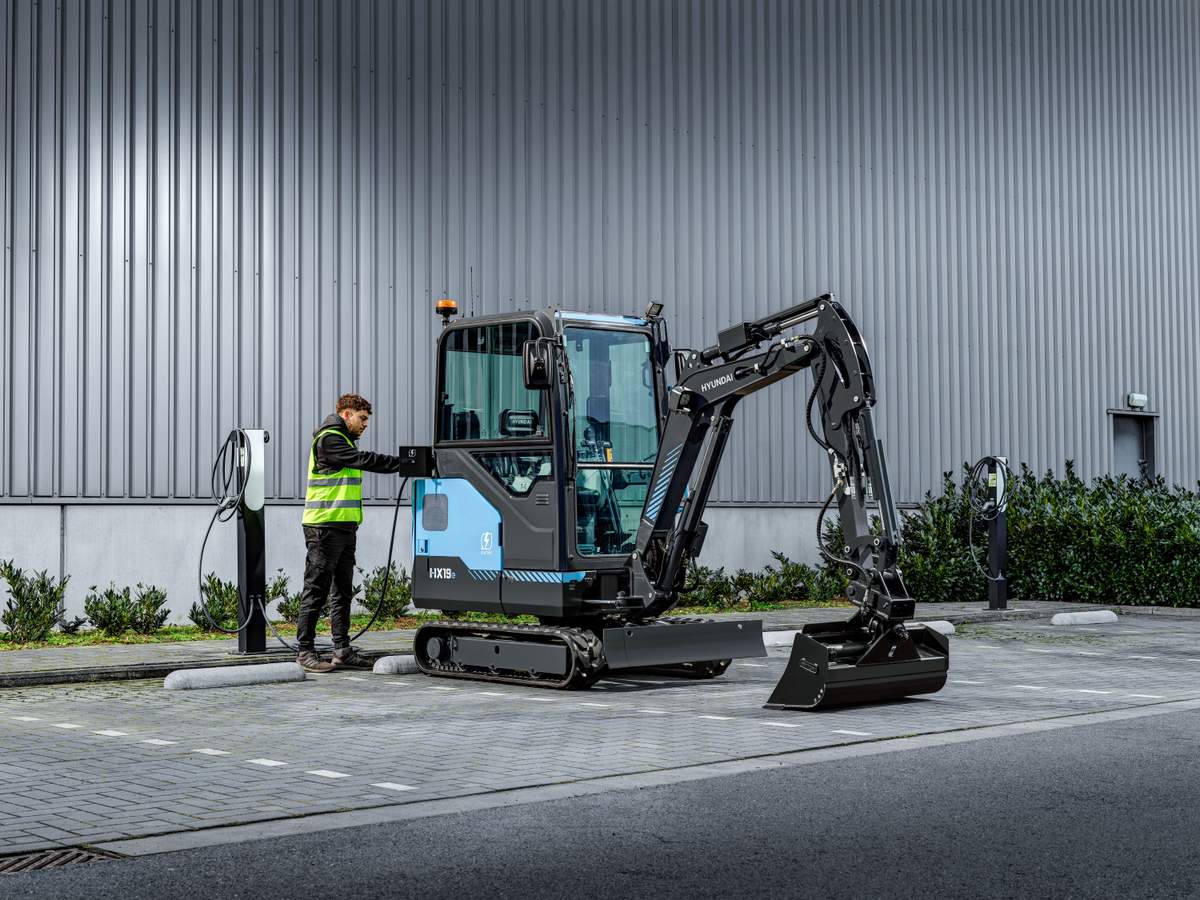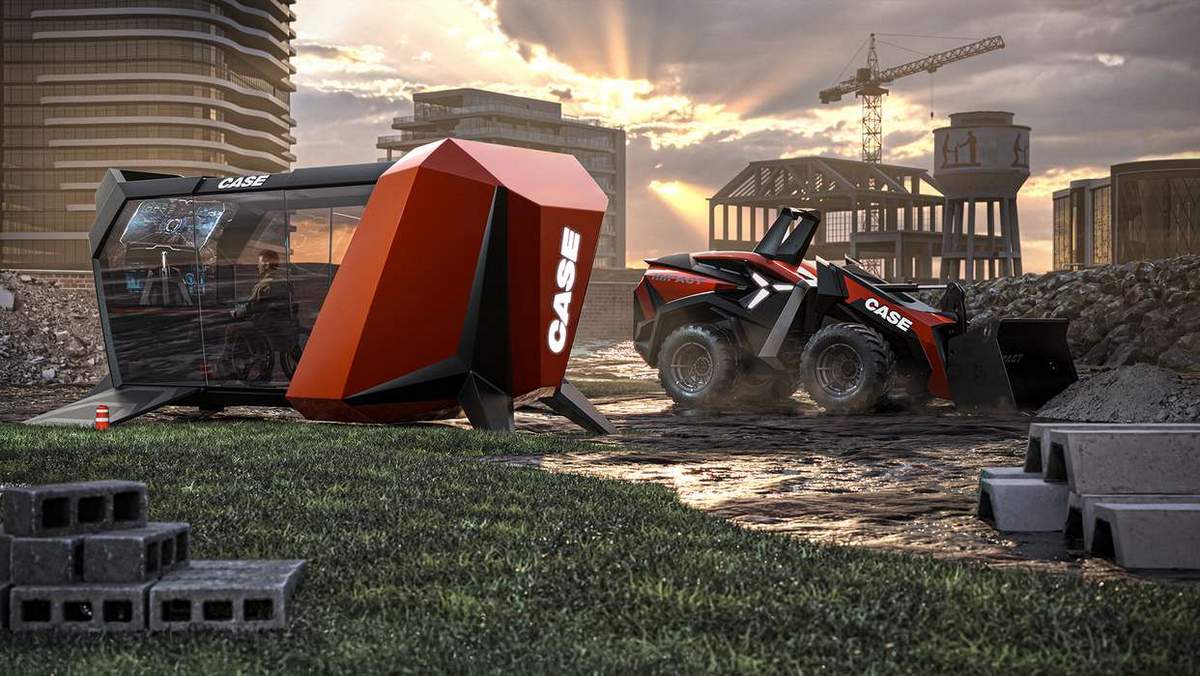Wheel Loader Rundown: Taking a Look at the Trends and Technologies Driving this Growing Market

Compact wheel loaders have a lot going for them. Excellent visibility. Versatility via attachments. High transport speeds. Add in their small size and big power and you have a machine built to move all types of materials in a variety of applications — from construction and agriculture to forestry and landscaping.
“Enhanced visibility and productivity allow compact wheel loaders to excel over other attachment-carrying machines, such as skid steer loaders and track loaders, in applications that involve material handling like loading and unloading trucks,” says Matthew Koester, wheel loader product manager at Hitachi Construction Machinery Americas Inc. “A higher tipping load, more reach and a higher dump height allow for easier loading into a truck or hopper. Better comfort, superior visibility and fast travel speeds give the operator the ability to achieve short cycle times and enhances load-and-carry performance.”
With all these great attributes, it’s no wonder that compact wheel loaders are gaining popularity. According to the manufacturers we surveyed, the market is thriving and is expected to stay that way.
“Around 7,000 to 8,000 CWLs are sold per year in North America,” says Darren Ashton, product manager of compact equipment for Volvo Construction Equipment. “They’re being utilized in more applications than ever before because they work for not only moving dirt but also sweeping, grinding, loading, unloading and much more. Also, quick-couplers allow you to change attachments without leaving the operator station, making them even more versatile.”
Curious what’s new and trending in the compact wheel loader market? Let’s take a look at the features, technologies and models making waves in this exciting machine category.
Comfort and Operator Assist
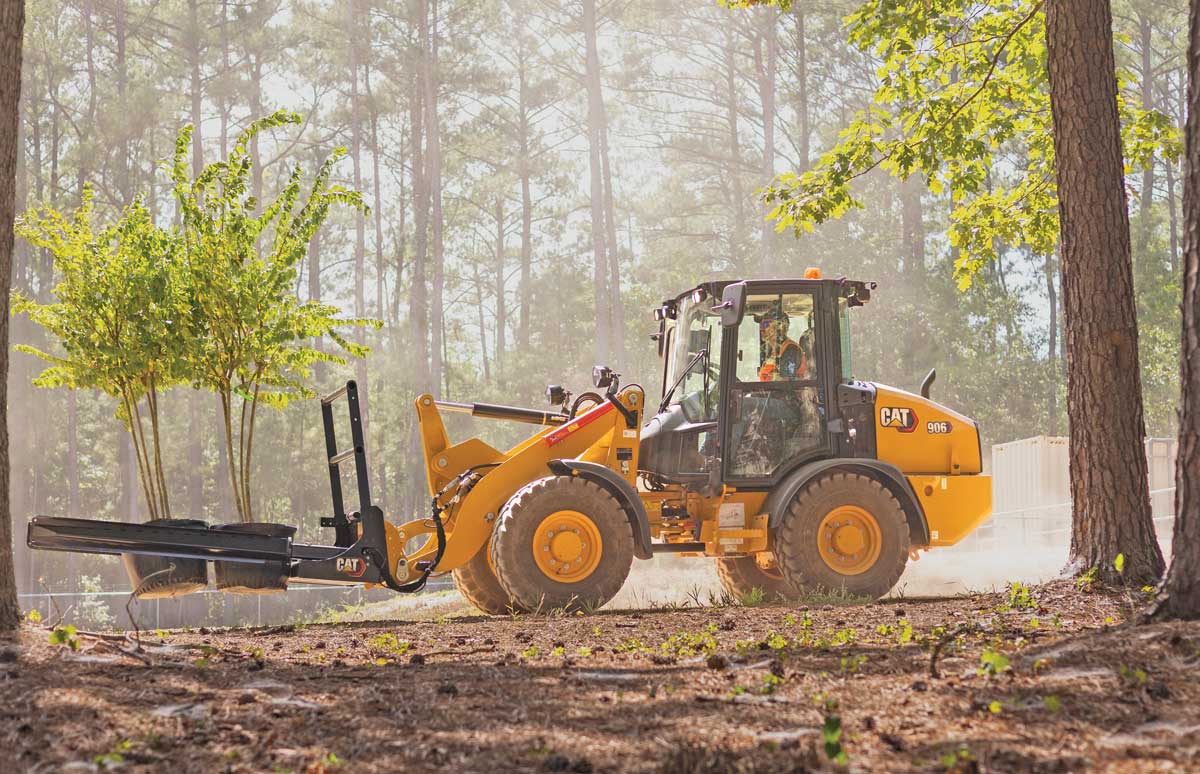
One of the biggest perks of a compact wheel loader is its larger workspace and increased comfort. Since we all know a comfortable operator is a productive one, manufacturers are creating machines that offer the ultimate work environment. Frank Gangi, product manager for CWLs and attachments at Yanmar Compact Equipment North America, emphasizes that a comfortable work environment will help limit operator fatigue and there are a variety of comfort features available. Some of those features include a premium enclosed cab with heat and AC, windshield defrosters for the front and rear and a comfortable driver’s seat with extra high backrests, cushioning and lumbar support.
“Ease of entry and a smooth ride are also features you’ll want to look for,” says Gangi. “Watch for compact wheel loader models with two doors, allowing you to easily get in and out on either side. Also consider an oscillating rear axle, which provides smooth and comfortable off-road operation.”
Kubota’s new R540 and R640 wheel loaders were designed with several updates that improve operator visibility, comfort and safety. The machines feature an enlarged front window and a new full-sized, all-glass right-side window that is the same size as the entrance door — providing 360-degree visibility. Operators are also treated to a roomier ride.
“By moving the reconfigured console and switch layout to the right side of the cabin, operators have more foot and leg room, and all controls are just a finger touch away,” says Bill Holton, Kubota product manager — construction equipment. “With the multi-function control lever, which comes standard on both the R540 and R640, it controls forward, neutral and reverse, differential lock and the wheel loader auxiliary port switch. All major loader functions and operational functions can be accomplished with one hand.”
Operator assist features like ride control, return to dig and rimpull control are very welcome additions on CWLs and are becoming more and more popular. These technologies allow operators to be more productive with less stress to them and the machine. For example, return to dig takes the guesswork out of using a bucket and helps an operator return the attachment to the exact same position every time with the push of a button. This helps reduce bucket wear and keep the operator focused on the task at hand. The rimpull control feature on compact wheel loaders allows you to adjust the torque to match the underfoot conditions in order to minimize tire spin, ultimately helping you lower total owning and operating costs.
“Ease of use features that help bring novice operators up to production levels faster, make machine operation mentally and physically easier and allow the operator to be more precise and do a better job are the technology features I see really taking off in the next few years,” says Robbie Southerland, Caterpillar compact wheel loader product specialist.
Attachment Usage

Although many people often associate compact wheel loaders with buckets and forks, the demand for other attachments is growing. For example, brooms, rakes, grapples and snowblowers are all becoming popular options. Luke Gribble, solutions marketing manager at John Deere, explains that the company currently has more than 100 models of attachments available for its compact equipment and over 50 of those are compatible with compact loaders. Opting for high-flow hydraulics and a hydraulic quick-coupler allows operators to utilize more attachments easily — enabling them to take on a variety of jobs and do more with less on the job.
“Currently, our 244 P-Tier and 324 P-Tier offer high-flow capabilities meaning they offer the most versatility if you are thinking about running a wide array of attachments to complete your jobs,” says Gribble. “The ability to easily switch between attachments is important to customers and that’s why we gave them the ability to choose between a hook/Euro style or John Deere quick-tatch coupler on the 184 to 324 sized loaders. Hook/Euro couplers are ideal for customers working with buckets and forks due to the higher breakout force and tip loads and the quick-tatch couplers offer the most versatility due to their compatibility with other John Deere attachments that you may be using on other pieces of compact equipment.”
Gribble also mentions John Deere offers Attachment Assist as an option on its compact wheel loaders. This feature is comprised of creep control and throttle lock which makes it ideal for attachments that are most efficient with full flow to the attachment and low ground speed simultaneously. He says, “Snowblowers and cold planers are just a couple attachments that come to mind that greatly benefit from including this option on your machine.”
Telematics
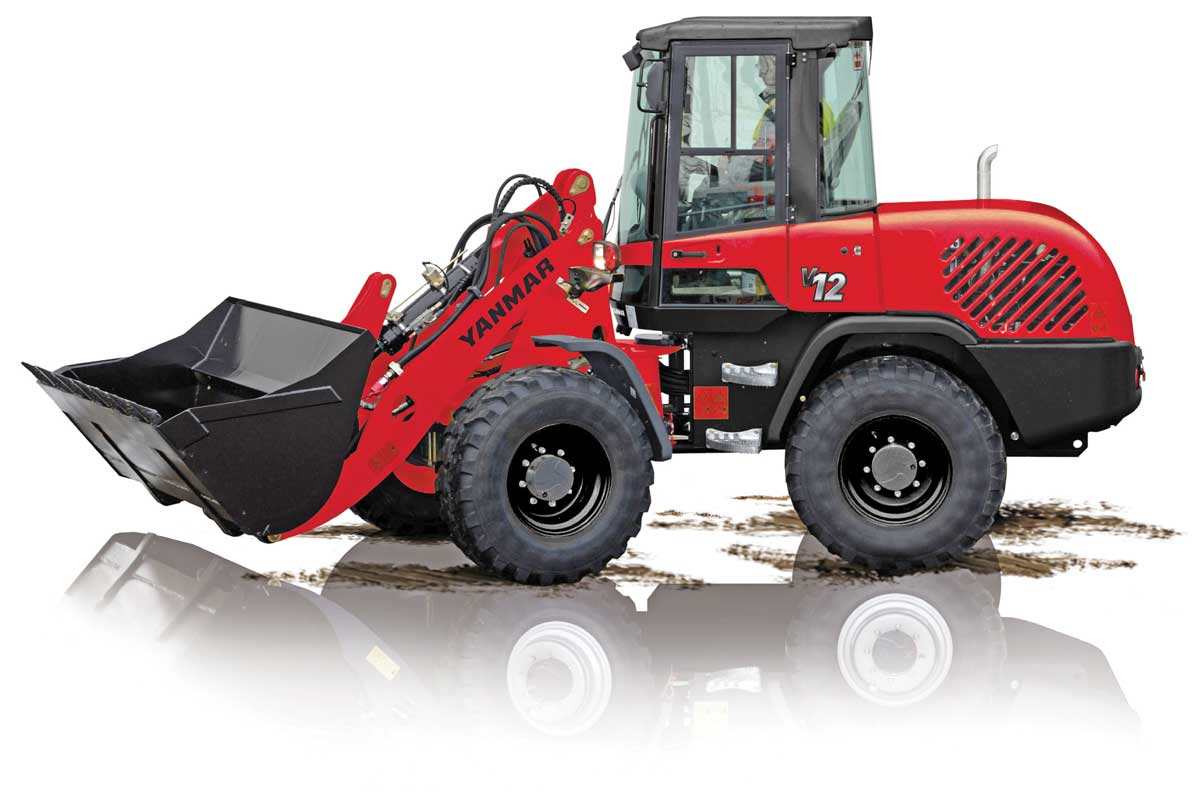
Machine health is important, and the more info operators have the better. Luckily, telematics is on the rise and many manufacturers have programs that allow owners to gather location info, receive maintenance alerts and more — keeping CWLs working more efficiently.
“Having a machine equipped with telematics can help an operator keep track of maintenance needs and maximize uptime by simplifying the diagnoses process when there is an issue with the machine,” says Koester. “Hitachi Global e-Service allows owners to monitor their loaders remotely via our Hitachi Owner’s Site with 24/7 access and Hitachi ConSite automatic monthly reports.”
Caterpillar’s VisionLink gives customers the ability to manage their equipment, including compact wheel loaders, virtually. Southerland says VisionLink allows Caterpillar’s customers to optimize their productivity by monitoring things like fuel usage, idle time and operating hours. Potential downtime is decreased thanks to the ability to monitor equipment health, fault codes, fluid analysis and service intervals.
SmartAssist Remote from Yanmar gives owner/operators full control of their machines. Available on the company’s V4-7, SmartAssist Remote has integrated theft prevention, allowing the owner to set a range from a location or starting time that will send a notification if the range is exceeded. Gangi explains SmartAssist Remote will also detect errors and send a notification directly to Yanmar for a quicker response to assist with the diagnosis. Thanks to SmartAssist Remote, service personnel are automatically notified when an error occurs, and downtime is shortened.
“With SmartAssist Remote, a customer can observe the operational status of the machine in real time,” says Gangi. “There is also an application for daily work reports that can be used to track, monitor and improve efficient use of the machine. Finally, SmartAssist Remote can be used to track inspection items, status, maintenance intervals and performance, as well as record any relevant comments about the maintenance. Best of all, it’s free for the first five years of ownership.”
Case CE’s SiteWatch telematics allows end-users to monitor their machine daily. Through the SiteWatch portal, owners can get utilization and fuel consumption reports, as well as info on the health of the machine. Geofencing is also available and allows owners to set security parameters around their project. Neil Detra, product manager for wheel loaders and compact wheel loaders at Case Construction Equipment, says if your compact wheel loader leaves the project or the fenced area, you will get a text message.
Ashton strongly recommends owners to take advantage of machine monitoring programs like Volvo ActiveCare Direct, which is available on some of its compact wheel loader models.
“Advanced telematics can help owners get the most service life out of their machines, reduce excess idling and gain additional insights that could lower a machine’s total cost of ownership,” he says. “An auto engine shutdown option will also help reduce fuel costs and machine maintenance with fewer idle hours being added.”
Electrification
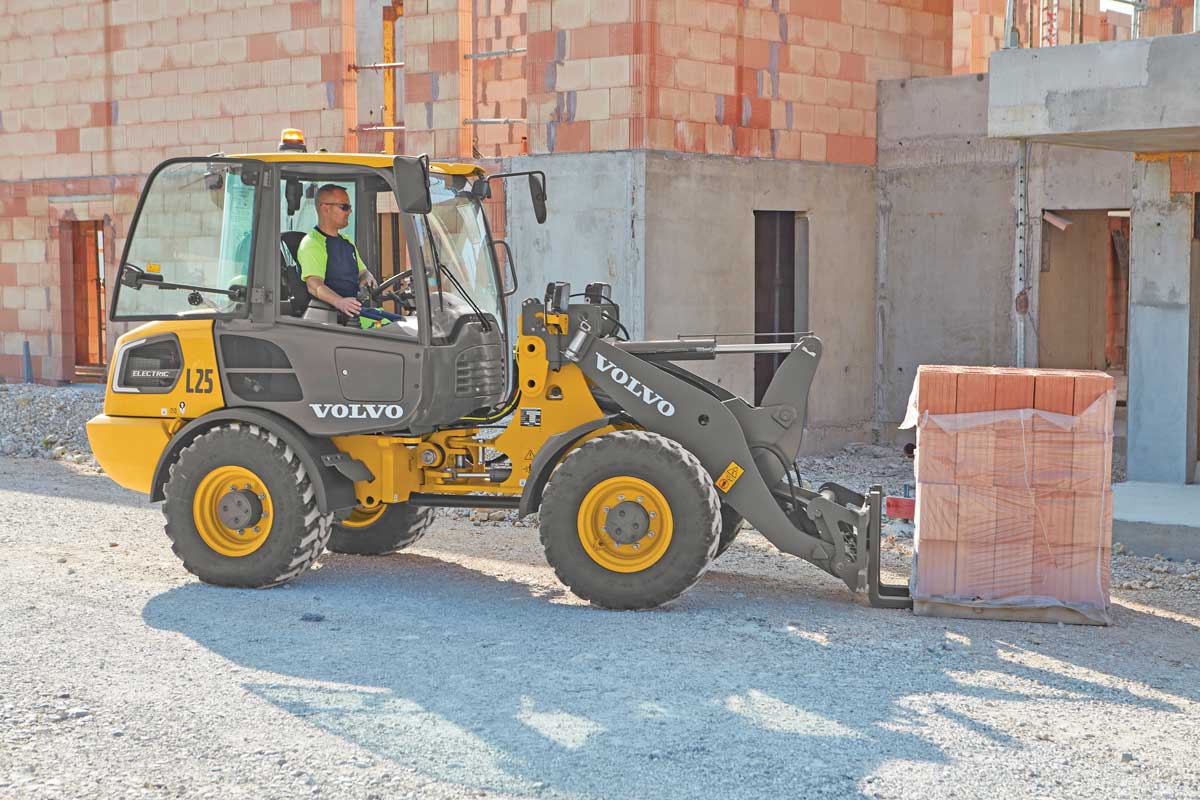
Like many other machine categories, compact wheel loaders are going electric. This is definitely an exciting time for the market, and the manufacturers diving into this new technology.
“The market has already started transitioning to electric machines, driven by government regulations and low emission targets and by applications that inherently call for less noise, no emissions and low vibration [ex. near livestock or in food production],” says Ashton. “As charging infrastructure and machines become more readily available, we expect a higher proportion of customers will look to these solutions.”
Volvo CE has been a driving force in electrification and currently offers two battery-powered compact wheel loaders in North America: the L20 and L25. Both of Volvo’s electric compact wheel loaders use lithium-ion batteries, which allow for operation in common applications like light infrastructure, gardening, landscaping and agriculture.
“The L25 has a full-turn tipping load of 3.7 tons, a dump height of 8.2 ft and a 2.2-ton payload fork load capacity,” adds Ashton. “The L20 Electric is a slightly smaller model, designed for applications where a 1.05-cu-yd bucket capacity and narrower profile are best.”
Equipment titan Caterpillar first announced its anticipated entry into the electric CWL market at bauma 2022 and plans to bring the battery-powered 906 machine to market in 2024. The new compact wheel loader will boast a 300 volt/64 kwh battery.
“We are super excited about this machine and where this electrification path may lead,” says Southerland. “We want to give the operator the choice of power source. Battery-electric machines are going to be an emerging product in the next several years.”
Earlier this year, John Deere debuted its first prototype battery electric compact wheel loader — the 244 X — at CONEXPO-CON/AGG. Gribble explains that while the 244 X is still in early development phases, the excitement around that machine at the show detailed how customers are looking for options within the compact loader space between traditional diesel-powered machines and alternative energy powered machines.
Case Construction Equipment also showcased its electric prototype, the EV 36, at CONEXPO back in March. Detra says the EV 36 offers a great solution to the industry’s demand for an electric CWL and complements other battery-powered units coming from the manufacturer, which include the CX15 EV mini excavator and 580 EV backhoe loader.
“The industry definitely has this pent-up demand for electric so there’s a lot excitement for these machines,” adds Detra. “Our EV line really targets landscape customers, utilities and other areas that can utilize these types of machines, particularly enclosed spaces where emissions or noise are a concern.”
Beyond battery-electric, Volvo’s Ashton says that other technologies are emerging as viable solutions for certain CWL applications. He says some of these technologies include synthetic diesels and biofuels, hydrogen-based drives (fuel cell and internal combustion), direct grid connected machines and hybrids.
He adds, “The key to success is using these technologies, along with advanced site and machine energy management, to make the construction sites of the future as energy efficient as possible.”
Pam Kleineke is managing editor of Compact Equipment.


